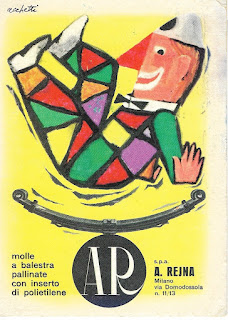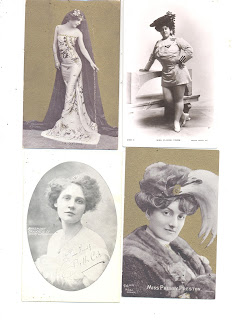Some information about early club juggling on the Australian Stage. References available upon request.
Indian club swinging was well established in
Australia by the turn of the 20th Century. However, although club
juggling was common in England and the US in the 1880s and 1890s, it had not
reached the antipodes. It was not until 1902, according to Charles Waller, that
the first club jugglers performed on the Australian stage.
Although it is probable that clubs were juggled in the country before
1902, the first theatrical performance occurred that year at the Tivoli Theatre
in Sydney. The performers were two Americans, Derenda and Breen, who were
comedic jugglers and carried Van Wyck clubs.
The two men had met at a club swinging
tournament in New York and from this meeting they developed a music hall act.
They were the first club jugglers to incorporate comedy and patter into their
performance despite their peers saying that club juggling was ‘too pretty’ for
comedy.
In Australia they
began the act by one of them leaping out of a life size poster.
Every night it was a different juggler who leapt from the backdrop, keeping the
audience guessing as to which one was alive and which a representation.
They incorporated a
great deal of humour into the act and showed an amazing dexterity on stage.
Their show involved juggling three Wyck clubs back to back, and the climax of
their performance was the pair mounting pedestals and throwing eight clubs at
each other.
Derenda and
Breen, Australian Town, and Country Journal 18 January 1902 p.22
. Derenda was well known for his
temper tantrums when the clubs misbehaved.
‘When
Derenda made a miss, his rage became a thing awful to behold. Sometimes he
would snap a mighty chain to pieces; sometimes with his teeth, tear lumps from
the top of a wooden pedestal.’
The arrival of the
juggling club on the Australian stage led to a contest between club users in
the country. Indian club swingers scoffed at the club jugglers, and the
cultural space occupied by the club was contested between the athletes and the
entertainers.
Whilst Derenda and
Breen were entertaining the crowds with their version of club juggling, well
known axe and Indian club swinger, Jack Harrison, challenged them to a match.
Jack called the pair ‘fancy club swingers’. A term that implied a derogatory
attitude towards the art of juggling.
The antagonism between
the Indian club swinging community and club juggling continued during the early
1900s. One article published in a Queensland paper compared the health effects
of club swinging and juggling as follows.
‘I am aware
that the artistes ‘on the boards’ execute some marvellous and intricate
evolutions but their work savours more of jugglery than legitimate club
swinging. As a rule, they use extremely light clubs, in fact were you to offer
them ones weighing 3 or 4lbs they would be unable to do their wonderful finger
swings catches and changes. This stage trick- club work looks very pretty and
is indeed clever, but it does not bring any appreciable development, as the
clubs being mostly held with the finger tips confine the muscular work to the
fingers, wrist and forearm.’
This description of club jugglers as ‘artistes’ who performed
‘jugglery’ dismissed the skill involved in juggling. The author clearly
considered juggling inferior to swinging. By 1910, this disdain of club
juggling had spread, and Indian Club Swinging competitions were posting rules
stating, ‘no juggling allowed’. This indicated that club juggling had spread in the general
community and was infecting the athletic halls of Australia. Another indication of the spread of club
juggling occurred in 1906, when an Australian club juggling act was incorporated
into the annual pantomime.
Australian born trio, Lennon Hyman, and Lennon, were experienced acrobats
before encountering the juggling club.
They began their career with touring companies presenting a comedy
contortionist act called ‘The Three Waiters.’ After a tour of New Zealand, they
took the act to England, and returned to Australia with some Van Wyck juggling
clubs. Their encounter with juggling clubs changed their status in the
theatrical community and ensured a successful career.
Lennon Hyman
and Lennon (Authors Collection)
They were comedians, and their costumes were similar in style
to those of Derenda and Breen. Modestly dressed on stage, the three men passed
clubs between them at a dizzying rate.
'The first turn was a display of juggling with Indian clubs which
they handled with remarkable proficiency, exchanging flying clubs with one
another, and sometimes surrendering three clubs in mid-air with an air of
perfect nonchalance…. the varied manipulations
were really astounding, the concluding turn in which the nine clubs were kept
twirling in the air created the greatest enthusiasm.'
In 1906 they performed in the annual William Anderson pantomime, Sinbad
the Sailor, suggesting that club juggling had become a popular feature of the
Australian stage.
If you are interested in current day juggling in Sydney, try Sydney Juggling for information.
If you are interested in current day juggling in Sydney, try Sydney Juggling for information.



















